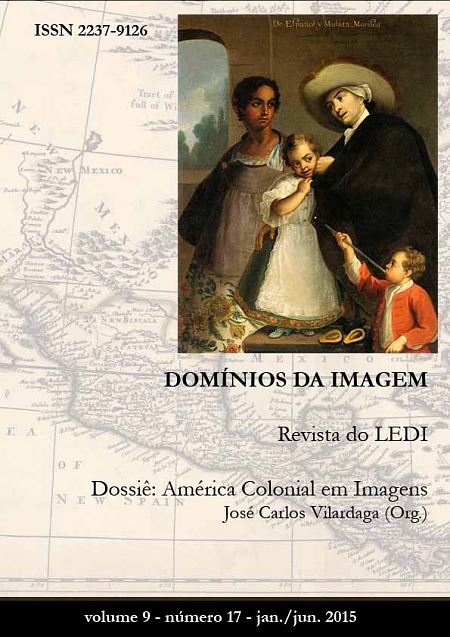Urban artvism: the new political figurations of Latin American feminisms.
DOI:
https://doi.org/10.5433/2237-9126.2015v9n17p196Keywords:
Latin America, Militancy, Gender, Feminism.Abstract
This article proposes a short presentation about the urban aesthetic and cultural interventions of feminist groups in Brazil, Argentina and Bolivia, which have emerged between the late 1980s and early 1990s, which build on the critical power relations in the women's daily lives. Since the 1970s, feminist artists and collectives have adopted the "activist art", that is, artistic performances and cultural interventions as a form of activism. Through various aesthetic elements, such as presentations of theaters, afiches, panels, publications, graffiti, among others, these groups have occupied and reframed public spaces innovating the banner "personal is political". Therefore, these organizations have updated the cultural imagination on topics inherent to Latin American feminisms as gender violence, bodily integrity, homophobia and ethnic issues. Thus, this proposal aims to map the experience of three Latin American groups, namely: As Loucas de Pedra Lilás (Brazil), Mujeres Creando (Bolivia) and Mujeres Públicas (Argentina), in order to understand how they have built new meanings for the occupation of public space as well as questioned the identity constructions and acquired rights in the democratization period of their countries.Downloads
References
CANCLINI, N. Culturas híbridas: estratégias para entrar e sair da modernidade. São Paulo: EDUSP, 2008.
CARNEIRO, R. G. Em busca do sol: o direito, o conflito e o teatro do oprimido. São Paulo: Annablume, 2012.
FELSHIN, Nina. But it is Art? The Spirit of Art as Activism. Seattle: Bay Press, 1996.
FRANCO, J. Invadir el espacio público, transformar el espacio privado. Debate Feminista, Año 4, v. 8, sep. 1993.
GADOTTI, M. Teatro do oprimido e educação. Metaxis: informativo do Centro de Teatro do Oprimido, CTO-Rio, Rio de Janeiro, n. 3, nov. 2007.
GARCIA, L. T. Teatro feminista: uma abordagem sobre as teorias, as práticas e a experiência. 2008. Trabalho de Conclusão de Curso (Departamento de Artes Cênicas) - Universidade Federal de Santa Catarina, Santa Catarina.
GARCIA, S. Teatro da militância. São Paulo: Perspectiva, 1990.
GARGALLO, F. Feminismo Latinoamericano. Revista Venezolana de Estudios de la Mujer, Caracas, ene.-jun., v. 12, n. 28, 2007.
GITAHY, C. O que é graffiti. São Paulo: Brasiliense, 1999.
GRANET, Ilona. Curb your animal instinct. 1980. Disponível em: http://ilonagranet.blogspot.com.br/p/street-signs.html. Acesso em: 8 jul. 2014.
GRAYZEL, S. Women's Identities at War: Gender, Motherhood and Politics in Britain and France during First World War. Chapel Hill: University of Carolina Press, 1999.
ISAAK, Jo Anna. Feminism & Contemporary Art: The Revolutionary Power of Women's Laughter. Rutledge: London and New York, 1996.
LAURETIS, Teresa. The violence of Rhetoric. IN: LANCASTER, Roger; LEONARDO, di Micaela (Org.). The Gender/Sexuality Reader. Culture, History, political economy. Routledge: New York, 1997.
LONGONI, A.; MESTMAN, M. Del Di Tella a "Tucumán Arde": vanguardia artística y política en el 68 argentino. Buenos Aires: Eudeba, 2008.
LOUCAS DE PEDRA LILÁS. Peça Mamy Blue. Jaboatão, 2001. Disponível em: http://www.loucas.org.br. Acesso em: 8 jul. 2014.
LOUCAS. Disponível em: http://www.loucas.org.br/clips_videos.htm. Acesso em: 29 set. 2013.
MUJERES CREANDO. Disponível em: http://www.mujerescreando.org. Acesso em: 8 jul. 2014.
MUJERES PÚBLICAS. Disponível em: http://www.mujerespublicas.com.ar/ Acesso em: 17 set. 2013.
MUJERES PÚBLICAS. Estampita. 2004. Disponível em: http://www.mujerespublicas.com.ar. Acesso em: 8 jul. 2014.
MUJERES PÚBLICAS. Té taz e série trofeo de guerra. 2006 e 2007. Disponível em: http://www.mujerespublicas.com.ar. Acesso em: 8 jul. 2014.
NAHOUM-GRAPPE, V. Estupros: uma arma de guerra. In: TREINE, S. (Coord.). O Livro negro da condição das mulheres. Trad. Nícia Bonatti Rio de Janeiro: DIFEL, 2011.
PEDRO, J., WOLFF, C. (Org.). Feminismo e ditaduras no cone Sul. Florianópolis: Mulheres, 2010.
PÉREZ, J.; LIDA, C.; LINA, L. Del Centario ao Bicentenario: artes visuais lecturas, problemas y discusiones en el arte argentino del último siglo (1910-2010). Buenos Aires: Edições do Centro Cultural de Cooperación/Fondo Nacional de las Artes, 2010.
PÉREZ, Juan; LIDA, Cecilia; LINA, Laura. Del Centario ao Bicentenario: Artes Visuais. Lecturas, problemas y discusiones en el arte argentino del último siglo (1910-2010). Buenos Aires: Edições do Centro Cultural de Cooperación/Fondo Nacional de las Artes, 2010.
QUESADA, Blanca F. Nuevos lugares de intención: intervenciones artísticas en el espacio urbano como una de las saídas a los circuitos convencionales Estados Unidos 1965-1995. 2004. Tesis (Doctorado) - Unvierstat de Barcelona, Barcelona.
RAGO, M. Poéticas e Políticas das indígenas bolivianas. In: RAGO, M.; MURGEL, A. C. Paisagens e tramas: o gênero entre a história e a arte. São Paulo: Intermeios, 2013.
RIAL, C. Guerra de imagens e imagens da guerra: estupro e sacrifício na Guerra do Iraque. Estudos Feministas, Florianópolis, v. 1, n. 15, 2007.
RIAL, C. Guerra de imagens e imagens da guerra: estupro e sacrifício na Guerra do Iraque. Estudos Feministas, Florianópolis, v. 15, n. 1, p. 280, jan./abr. 2007.
RIOS, V. Escena de Avanzada or the Possibilities of a Lain American Avant Garde. In: The Second International Conference on the Arts in society. Kassel, Germany. August, 2007. Disponível em: http://a07.cgpublisher.com/proposals/115/index_html. Acesso em: 17 jun. 2015.
ROUSSO, H. Sobre a história do tempo presente: Entrevista com o historiador Henry. Revista Tempo e Argumento, Florianópolis, v.1, n. 1, p. 201-216, jan./jun. 2009.
RUSSO, M. Female grotesques: carnival and theory. In: LAURETIS, T. (Org.). Feminist studies/ critical studies. Londres: Macmillan, 1986.
SEGATO, Rita. Guerra no corpo: ser mulher na América Latina. Jun. 2009, Disponível em: http://www.ihu.unisinos.br/noticias/noticias-anteriores/24049- guerra-no-corpo-ser-mulher-na-america-latina. Acesso em: 24 mar. 2015.
SEGATO, Rita. Território, soberania e crimes de segundo estado: a escritura nos corpos das mulheres de Ciudad Juarez. Revista Estudos Feministas, Florianópolis, v. 13 n. 2, maio/ago. 2005.
SOIETH, R. A conquista do espaço público. In: PINSKY, C.; PEDRO, J. (Org.). Nova história das mulheres no Brasil. São Paulo: Contexto, 2012. p. 218-237.
SWAIN, Navarro Tania. Os limites do corpo sexuado: diversidade e representação social. Revista Labrys Estudos Feministas, n. 13, 2008.
SWAIN, T. N. O Grande Silêncio: a violência da diferença sexual. In: STEVES, C. et. aL. (Org.). Gênero e Feminismos: convergências (in)disciplinares. Brasília: Ex Libris, 2010.
VARAS, Paulina. De la vanguardia artística chilena a la circulación de la Escena Avanzada. Disponível em: http://icaadocs.mfah.org/icaadocs/Portals/0/ WorkingPapers/No1/ Paulina%20Varas.pdf. Acesso em: 15 set. 2013.
VIRREIRA, Helen. Mujeres creando, feminismo de luchas concretas. 2009. Disponível em: http://www.mujerescreando.org/pag/articulos/2009/06- junio/mujerescreando.htm. Acesso em: 17 set. 2013.
WOLFF, Janet. Women at the Whitney, 1910-30: Feminism/Sociology/Aesthetics. Modernism/Modernity, n. 6.3, p. 117-138, 1999.
Downloads
Published
How to Cite
Issue
Section
License
Copyright (c) 2015 Domínios da ImagemDomínios da Imagem adopts the Creative Commons Attribution 4.0 International License, therefore, the copyrights related to the published articles belong to the author(s), who grant the journal the exclusive right of first publication.
Under this license it is possible to: Share - copy and redistribute the material in any medium or format. Adapt - remix, transform, and build upon the material, giving due credit and providing a link to the license and indicating if changes were made.












 The works in this journal are licensed under Creative Commons .
The works in this journal are licensed under Creative Commons .